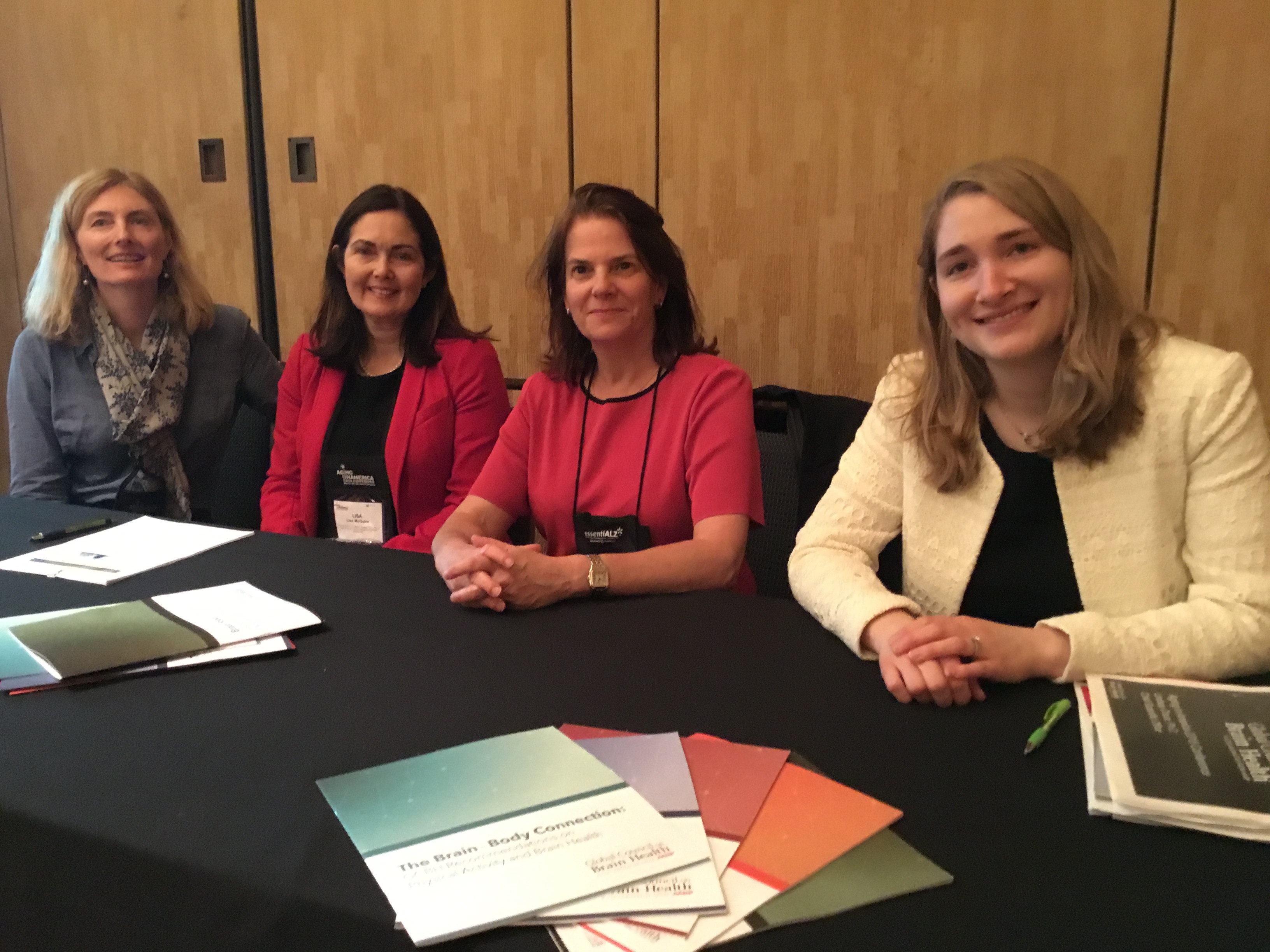AARP Hearing Center
People, Professionals and Public Health Take Cognitive Aging Head-On
By Kim Sedmak, March 30, 2018 12:30 PM

This blog is part of a daily online report from ASA, where AARP’s policy and research experts and thought leaders are sharing fresh perspectives and insights, identifying innovative trends, and providing cutting-edge data, research and commentary. Read more here .
The music of the 80’s and 90’s rock band Blondie blasted throughout the meeting hall in anticipation of the American Society on Aging’s (ASA) riveting conference session on cognitive brain health about to get underway. Attendees hustled to their seats to the tune of those famous Blondie song lyrics, One way or another-- we’re gonna -- getcha, getcha, getcha…..
Yes, the blaring sounds resembled the high-voltage, recorded music that always pulses through the speakers before the headliner comes onstage at a rock show—and in fact, the session was highly anticipated (okay, not as much as a Stones show, admittedly). But the music also had a point. Session moderator Sarah Lenz Lock, Senior Vice President for Policy Development and Integration and Executive Director for the Global Council on Brain Health (GCBH), explained the reason behind the tune. “Why are we hearing this music?” she asked. “Because it reminds us cognitive aging is going to get us all one way or another. We all want to stop that or at least decrease it from happening.”
Joining Lock for the session were three of the nation’s leading dementia advocates, who presented new data and innovative programs to better understand the seriousness of this expanding global health threat and what is being done to educate all sectors about the disease.
Lisa McGuire, a leading expert on Alzheimer’s disease with the National Center for Chronic Disease Prevention & Health Promotion at the Center for Disease Control and Prevention (CDC), explained dementia is the umbrella name for a disease of which there are six types, with Alzheimer’s being the most common. It’s the fifth leading cause of death in the United States.
The latest data reflects nearly 6 million Americans have some form of the disease. One in ten adults age 50+ are living with Alzheimer’s and that number jumps to one in three for those age 85+, two-thirds of which are women.
McGuire reported that this summer the U.S. government will issue a new national road map for addressing Alzheimer’s disease. She leads an Alzheimer’s-focused office of just five full-time employees and “with a budget of $4 million, tackling the fifth leading cause of death in people 65 years and older.”
Going forward, the entire system of support will be challenged, noted McGuire, discussing the work that her team is already doing to tackle the situation. “The demand on family caregivers will continue to be enormous, and while we’re developing new tools for the public, we’re also focusing on training the public health workforce,” she said. To learn more about the CDC’s Healthy Brain Initiative visit www.CDC.gov/aging.
A call to action for more dementia training and education continued when Kristine Yaffee, Chair & Professor of Psychiatry, Neurology & Epidemiology at the University of California - San Francisco, took the microphone.
According to Yaffee, “There will be a global tripling of dementia in the next 20 years. Developing countries have no national plans for educating professionals. We need to educate and train the next generation of leaders to prevent Alzheimer’s and reduce the risk factors.”
Yaffee identified the Atlantic Fellows for Equity in Brain Health as an example of a new program doing this work. The University of California - San Francisco and Trinity College Dublin are joining forces globally to develop new opportunities for future leaders to bridge the wide gap between the need for dementia prevention, treatment, care and providing of services.
“We all want a cure, better medications and treatment, but we can also modify risk factors with diabetes prevention and physical activity to reduce Alzheimer’s,” said Yaffee.
Reducing dementia risk factors turned out to be a prominent session theme as Lindsey Chura, Chief Scientific Officer for the GCBH and Senior Policy Research Advisor at AARP, further advanced the conversation.
“Our aim is to cut through the clutter of information out there and present the latest work in a scientific manner that hopefully drives behavior change and delays the onset of this disease,” emphasized Chura. “We work to debunk the myths being touted sometimes by the media and curate information with a global view.”
Launched in 2015, GCBH is an independent collaborative, created to provide trusted information on how people can maintain and improve their brain health. Its clear and dependable guidance is based on the foremost thinking from scientists, doctors, scholars and policy experts around the world. Its overriding goal is to help people apply the latest scientific insights to boost their cognitive health and live their best lives.
Said Lock, “We need to collectively work together to communicate strong messaging to change lives and involve the public, professionals, and health policy advocates so changes can be made to make a difference.”
Yaffee reiterated that notion. Simplifying the message of healthy living, she said, “How about if we start by saying what’s good for your heart is good for your brain.”































































